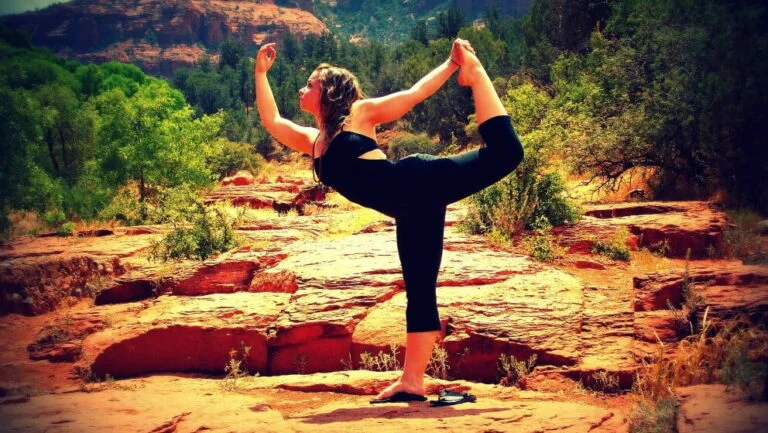Cultivating Balance Between Our Yoga Practice And Our Life
https://www.stillpointyogalondon.com/delicate-balance-of-yoga-and-life/ – By Scott Johnson
“How one walks through the world, the endless small adjustments of balance, is affected by the shifting weights of beautiful things.” – Elaine Scarry
Each day people come in to practice yoga. All have their own reasons. We, as teachers, move through the room just seeing how we can help. A gentle comment here, a light encouragement there. Fully present and safe physical hands-on adjustments that allow a person’s physical body to connect with their breath and to let go toward a new sensation. Or perhaps support towards a new posture.
Our intention for others is always the same as our own teachers had for us. To be able to find some kind of balance in our practice and lives and recognise when we are practising in a way that is detrimental. To align ourselves toward the balance of subtle and gross, breath and body. In my last post I talked about the breath being the fulcrum of our practice and lives. We now want to go deeper. We want to see how our practice allows for a more balanced perspective.
Balancing challenge
“Happiness is not a matter of intensity but of balance, order, rhythm and harmony.” – Thomas Merton
This Ashtanga yoga practice is hard when you begin and it can take a while for that challenge to be a little more gently held. But that’s no bad thing. Being hard means bringing up all the ways you see yourself and meeting that. Perhaps it’s tight hamstrings, or sitting at a desk all day, or a troubled relationship. We can bring all these things to a yoga mat. In fact, all the things you think you are, and all the things you feel you are, can play themselves out on the mat itself. But if a yoga practice isn’t challenging us, can we call it an effective practice?
A practice that pushes our buttons helps to see what buttons we actually have. To see what buttons we have brings them out and allows for us to have a relationship with them, to work with them and perhaps to begin to let them go.
So our practice is about really noticing that it is hard and, at the same time, seeing the ways in which we can develop the opposite of hard. And I see the opposite of hard as the ability to take care of ourselves. We can practice effectively, and with great vigour and energy, but at the same time taking care and learning to practice with kindness and compassion to ourselves is such a valuable ability to nurture.
Balancing our practice
I see people using the practice to beat themselves up. That if something is a certain way or hasn’t been achieved then it somehow takes away from how they see themselves and how the practice is working for them. That they are somehow less because of their yoga practice.
Yet, I also see the same people have the ability to meet true balance in their practice. That place where they meet the development of the energy of their own body and breath with the will to stay focused, calm and attentive. So how can these two things be?
If we meet the practice regularly then we are allowing ourselves to meet the ebb and flow of our lives too. Some days are good, some days are bad. Some practices are good, some practices are bad. Perhaps focusing on cultivating the ability to have a good or bad practice takes away from just practice… pure practice. Not naming our practice as anything gives us the opportunity to meet the practice in an open way and to just be with what is required for that moment, at that time.
“My point is, life is about balance. The good and the bad. The highs and the lows. The pina and the colada.” – Ellen DeGeneres
So our practice and lives can mirror each other. I invite you to see if you can cultivate the awareness of the breath and body together to be the way we meet our world, because the practice wants to be exactly that. One where we are able to progress, not only in the potential our yoga practice has for this physical body, but also in the development of the compassionate awareness of it. Bringing that into our daily lives is where we begin to transform the way we act and move in the world.
Noticing when we are not balanced
I like to use the practice to really notice when I am out of balance and the practice of Ashtanga yoga really shows that up.
In Ashtanga yoga we are balancing the achievement of a posture/vinyasa with the actual body and breath that is opening into that asana. We have all the sensations feeding back and telling us how it feels, and then we have the mind that tells us if we are doing it right or wrong based on those sensations. We are cultivating the ability to be able to balance the body and breath while keeping the awareness on these different areas.
The Ashtanga yoga practice challenges us beautifully to stay present, to be here and to return if we lose our focus. We are cultivating balance by consistently seeing that we are off balance and recognising this. Yoga is then the tool to get back on track.
Balance in our lives
Like Ashtanga yoga, life can be hard. But that’s no bad thing. That’s why we need a practice. To be able to traverse the many things that life throws our way and to meet them with some kind of awareness and choice.
Like life, you want to hold your practice in your hand so lightly. Like it’s the most precious thing. Because it is. And to continue to meet it like this means you meet yourself in the same way.

